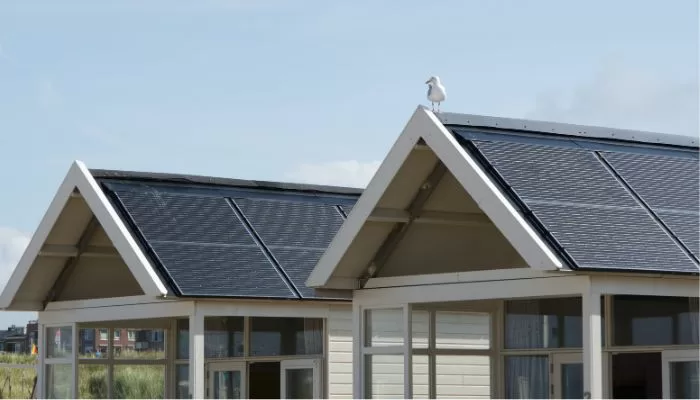Technology
How to Get Cheaper Energy in Australia

In the land down under, where the sun scorches in the summer and the chill bites in the winter, managing energy costs is a topic on many minds. With electricity prices on the rise, Australians are constantly looking for ways to cut down their energy bills. Let’s explore some effective strategies to reduce your energy expenses without compromising on your comfort.
Understanding Your Energy Usage
Before you can cut costs, you need to understand where your energy dollars are going. Start by examining your energy bills over the past few months to get an average of what you’re spending. Look for patterns in your usage—do you consume more energy in the evenings, on weekends, or during certain seasons? Identifying these patterns is the first step towards smarter energy consumption.
Moreover, consider getting a smart meter or an in-home energy monitor. These devices provide real-time information about your energy usage, allowing you to make immediate changes to save power and money.
The Power of Energy-Efficient Appliances
Energy-efficient appliances can have a significant impact on reducing your energy consumption. When it’s time to replace or upgrade, look for appliances with a high star rating—the more stars, the better the energy efficiency. Although these appliances might have a higher upfront cost, the savings on your energy bills over time will make it a worthwhile investment.
Additionally, remember to use your appliances wisely. For instance, only run your dishwasher or washing machine when you have a full load, and use the eco settings if available.
Home Insulation and Design
Good home insulation is crucial for keeping your home warm in winter and cool in summer, reducing the need for heating and cooling. Insulate your roof, walls, and floors, and seal up any drafts around doors and windows. This can dramatically decrease the amount of energy needed to maintain a comfortable temperature in your home.
Furthermore, consider the design and orientation of your home. Utilizing natural light and ventilation can reduce your reliance on artificial lighting and air conditioning, leading to lower energy bills.
Smart Heating and Cooling
Heating and cooling can account for a large portion of your energy bill. To save money, set your thermostat to an efficient temperature—around 18 to 20 degrees Celsius for heating and 25 to 27 degrees Celsius for cooling. Every degree outside of these ranges can increase your energy usage by up to 10%.
Also, consider investing in a programmable thermostat that adjusts the temperature based on the time of day or whether anyone is home, ensuring you’re not paying to heat or cool an empty house.
Solar Energy Solutions
Australia’s abundant sunshine makes it an ideal place for solar power. Installing solar panels can significantly reduce your energy bills, and you may even be able to sell excess electricity back to the grid. While the initial setup costs can be high, government rebates and incentives can help offset these expenses.
Remember to research and choose a reputable solar provider to ensure you get the best quality panels and installation service.
Energy-Efficient Lighting
Switching to LED lights can save you a lot on your energy bill as they use up to 80% less energy than traditional incandescent bulbs. They also last much longer, so you won’t need to replace them as often.
Don’t forget to make the most of natural lighting too. Open curtains and blinds during the day to reduce the need for artificial lights.
Smart Energy Habits
Developing smart energy habits can lead to significant savings. Simple actions like turning off lights when you leave a room, unplugging chargers when not in use, and avoiding the standby mode on electronics can all add up.
Educate your family or housemates about these habits to ensure everyone is contributing to the energy-saving efforts.
Compare Electricity Plans
One of the most effective ways to reduce your energy bill is to ensure you’re on the best plan for your needs. Take the time to compare electricity plans to find a more competitive rate. With the deregulation of the Australian energy market, you have the power to choose a provider that offers lower rates or better customer incentives.
Remember to read the fine print and understand the terms of your contract, such as the length of the plan, rates, and any fees for switching providers.
Government Rebates and Incentives
The Australian government offers various rebates and incentives to encourage energy efficiency. These can include discounts on energy-efficient appliances, solar panel installations, and home insulation. Check with your local government or the Australian Energy Regulator to see what incentives you might be eligible for.
Taking advantage of these programs can reduce your upfront costs and make your energy-saving investments more affordable.
Conclusion: Taking Control of Your Energy Costs
In conclusion, getting cheaper energy in Australia is about being proactive and informed. From understanding your energy usage to investing in energy-efficient appliances, from improving your home’s insulation to installing solar panels, there are numerous ways to reduce your energy expenditure. Cultivating smart energy habits and regularly comparing energy plans can also lead to substantial savings.
Remember, every small change you make contributes to a larger impact on your energy bills. By taking control of your energy consumption and staying informed about your options, you can enjoy a comfortable home while keeping your energy costs in check.

















































